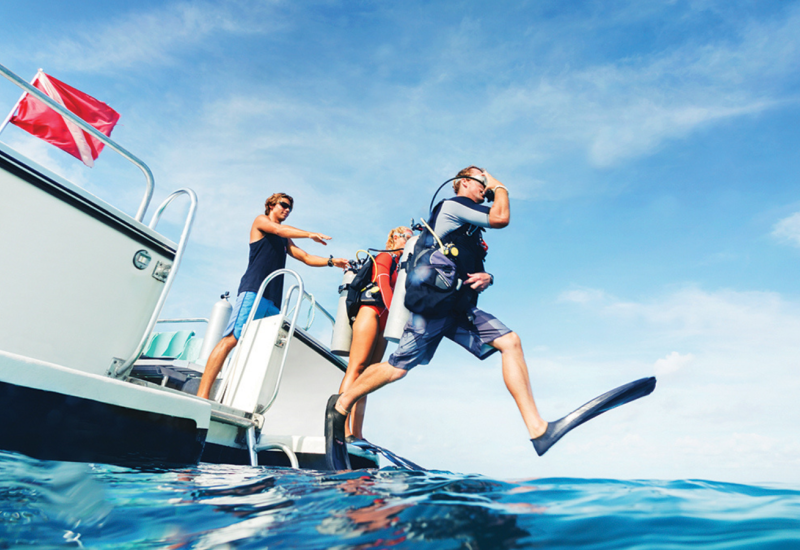How To Perform the Ultimate Buoyancy Check
The key to effortless neutral buoyancy under water takes place on the surface: deciding how much weight to wear. How much is too much? Too little? Use this test to find the right ballast.

PADIHow To Perform the Ultimate Buoyancy Check
STEP 1: Estimate the Weight You’ll Need
Based on the equipment you’re wearing and your body weight, put on enough lead so that you float at eye level while holding a full breath with no air in your BC and without using your arms or fins. An exhale should cause you to sink.
Exposure protection is the primary variable here. Divers with very little wetsuit protection will require less weight and undergo fewer buoyancy changes during the dive than those wearing a full wetsuit or a drysuit.
Another variable is the tank you’re using and weight of the air inside it. As they’re emptied, most tanks will add between 5 and 8 pounds of buoyancy. If you check and adjust your weighting with a full tank, add 5 pounds to account for increased buoyancy as you use up your air.
SEE MORE: Scuba Hand Signals Every Diver Should Know
STEP 2: Monitor Your Buoyancy
During your dive, note whether you were over-weighted or under-weighted. Did you have to kick to stay down at depth? Or did you have to inflate your BC more than halfway to keep from sinking? Because of the change in tank buoyancy, it is better to be slightly over-weighted at the beginning of your dive and use your BC to maintain buoyancy. Remember to vent air from your BC as your tank pressure drops and the cylinder becomes more buoyant.
STEP 3: Perform the Ultimate Buoyancy Check
Because of the importance of slow, controlled ascents and safety stops, you must be able to maintain neutral buoyancy at the end of a dive, when your tank pressure is low and you’re approaching the surface to perform a safety stop. That’s why the best time to check your buoyancy is at the end of a dive: Once you’ve breathed the tank down to 500 psi, ascend to approximately 10 feet and vent all remaining air from your BC. If your buoyancy is correct, you’ll be neutral, so when you inhale you tend to rise and when you exhale you tend to sink.
Depending on the results of this test, either add or subtract weight before your next dive. At the end of your next dive, double-check your buoyancy.










